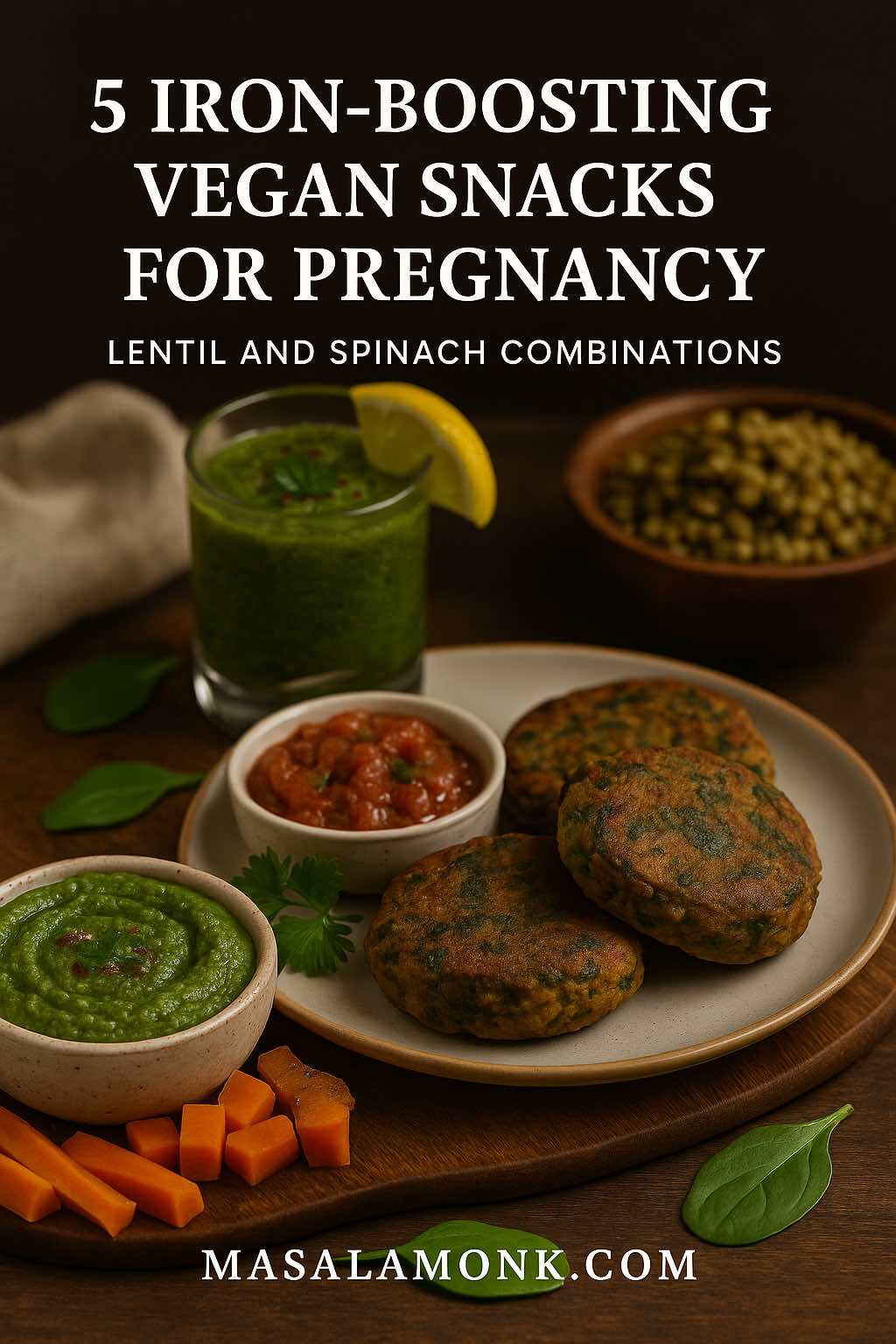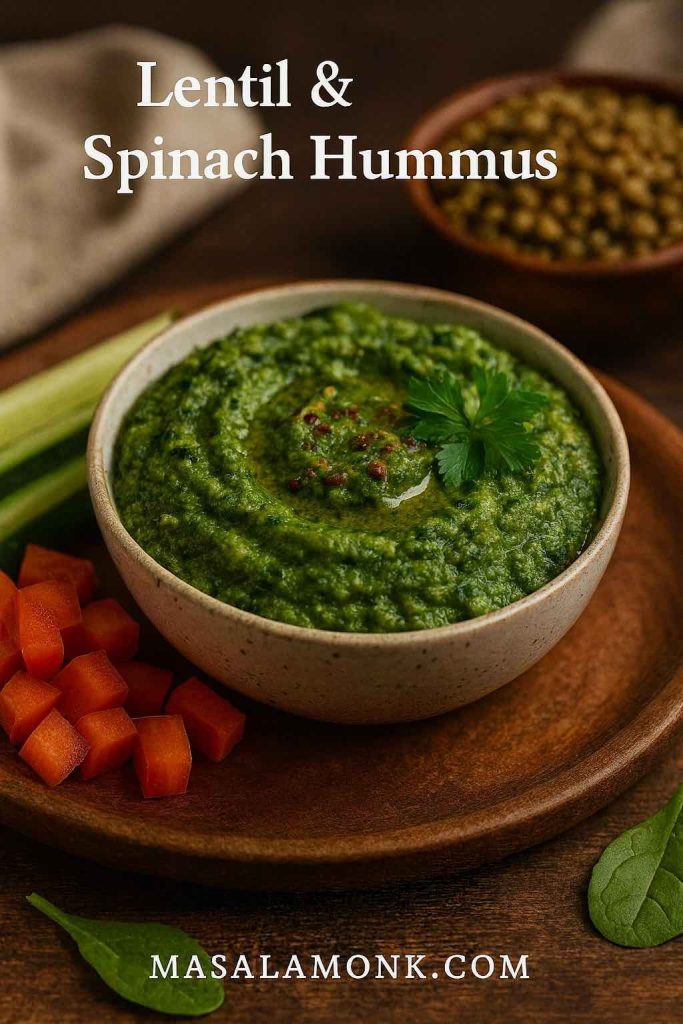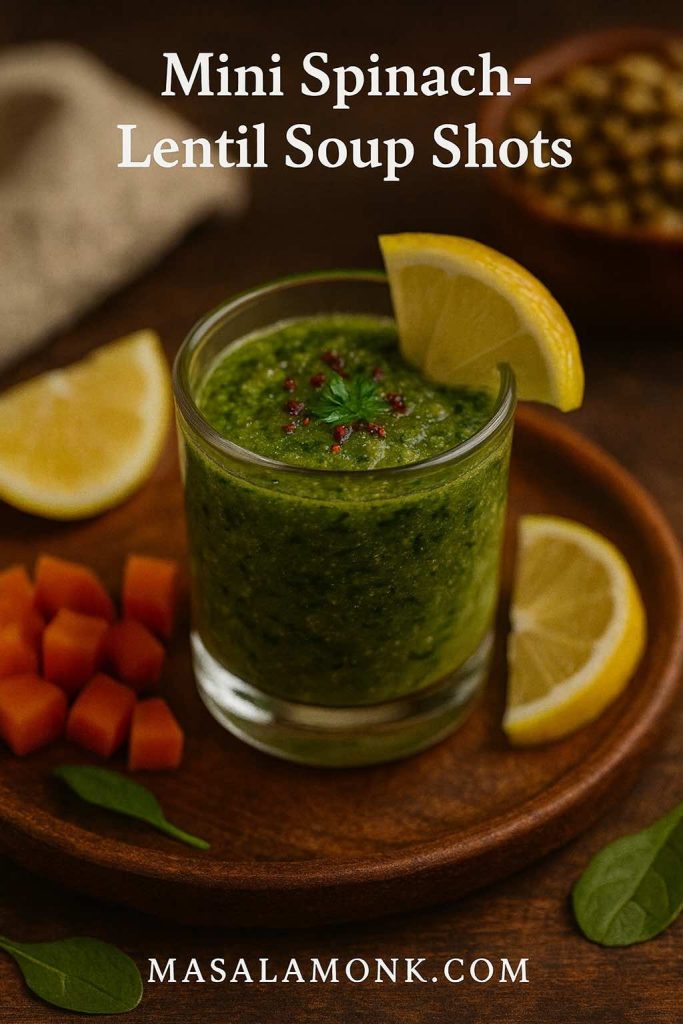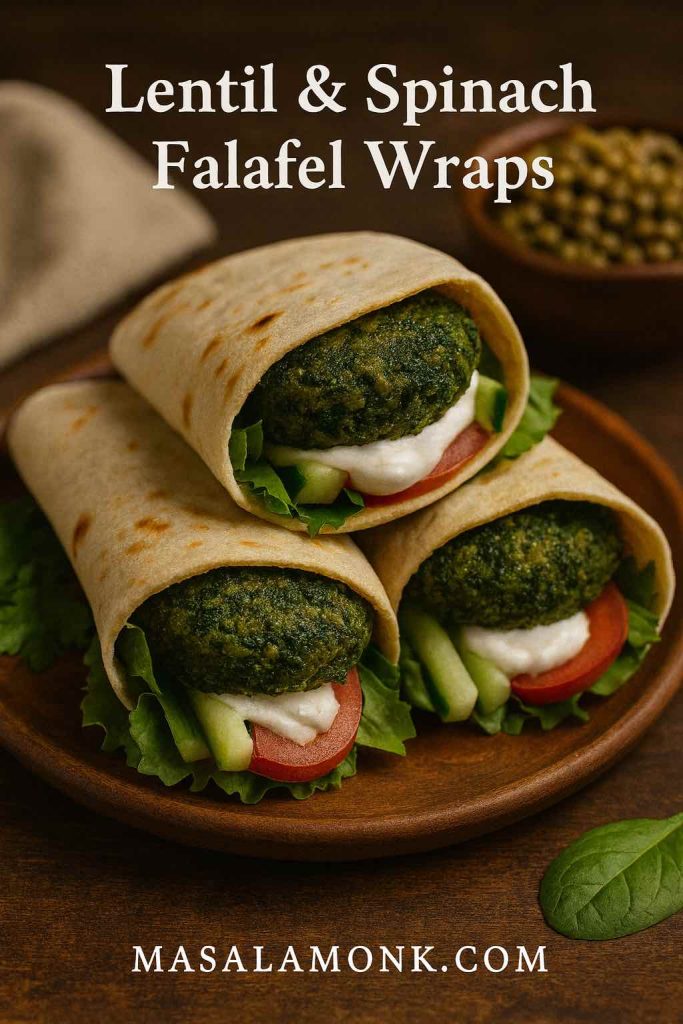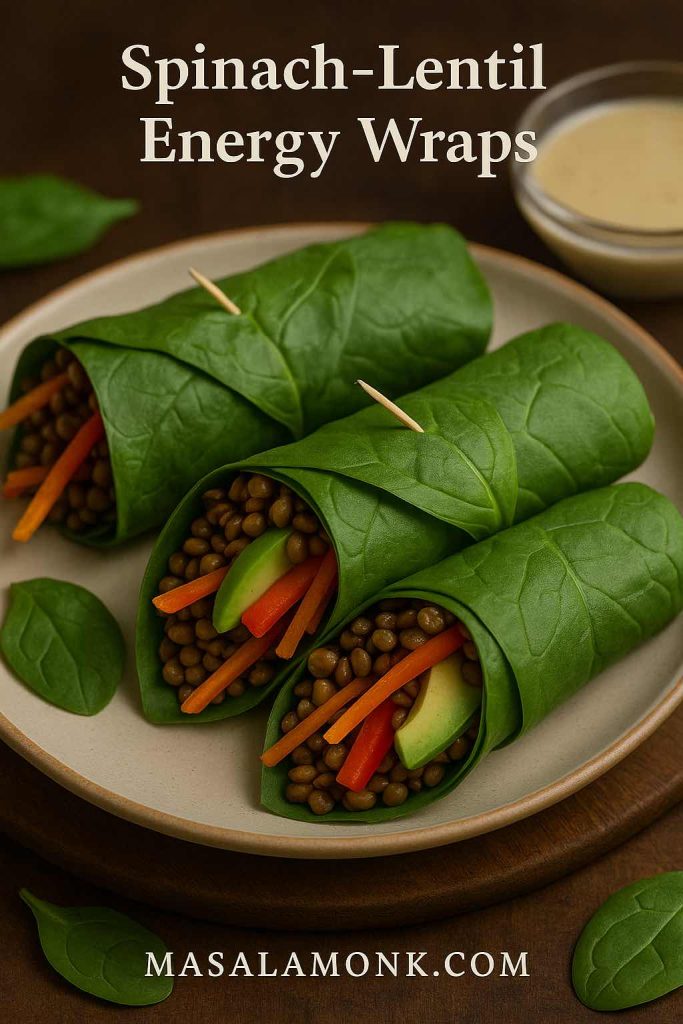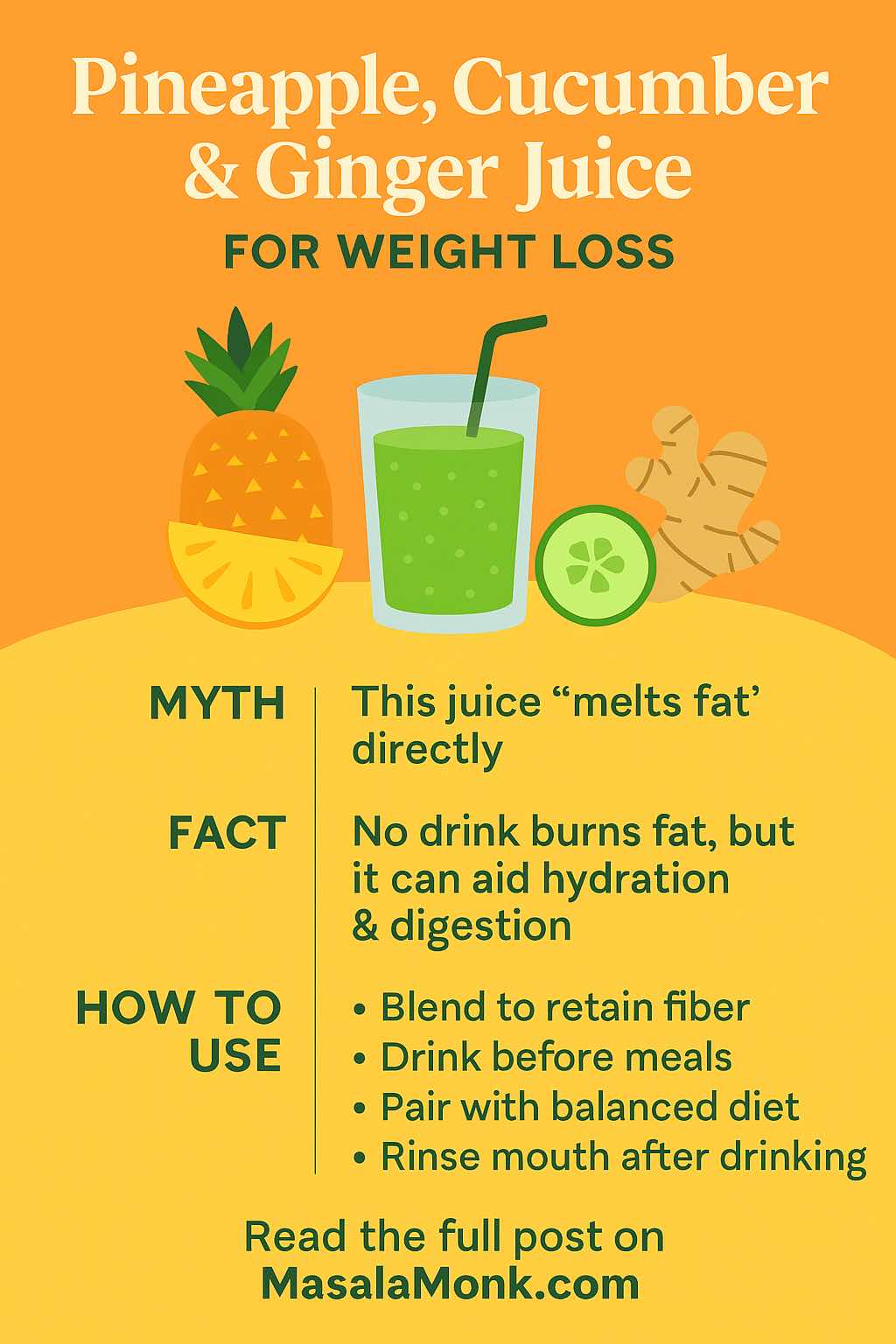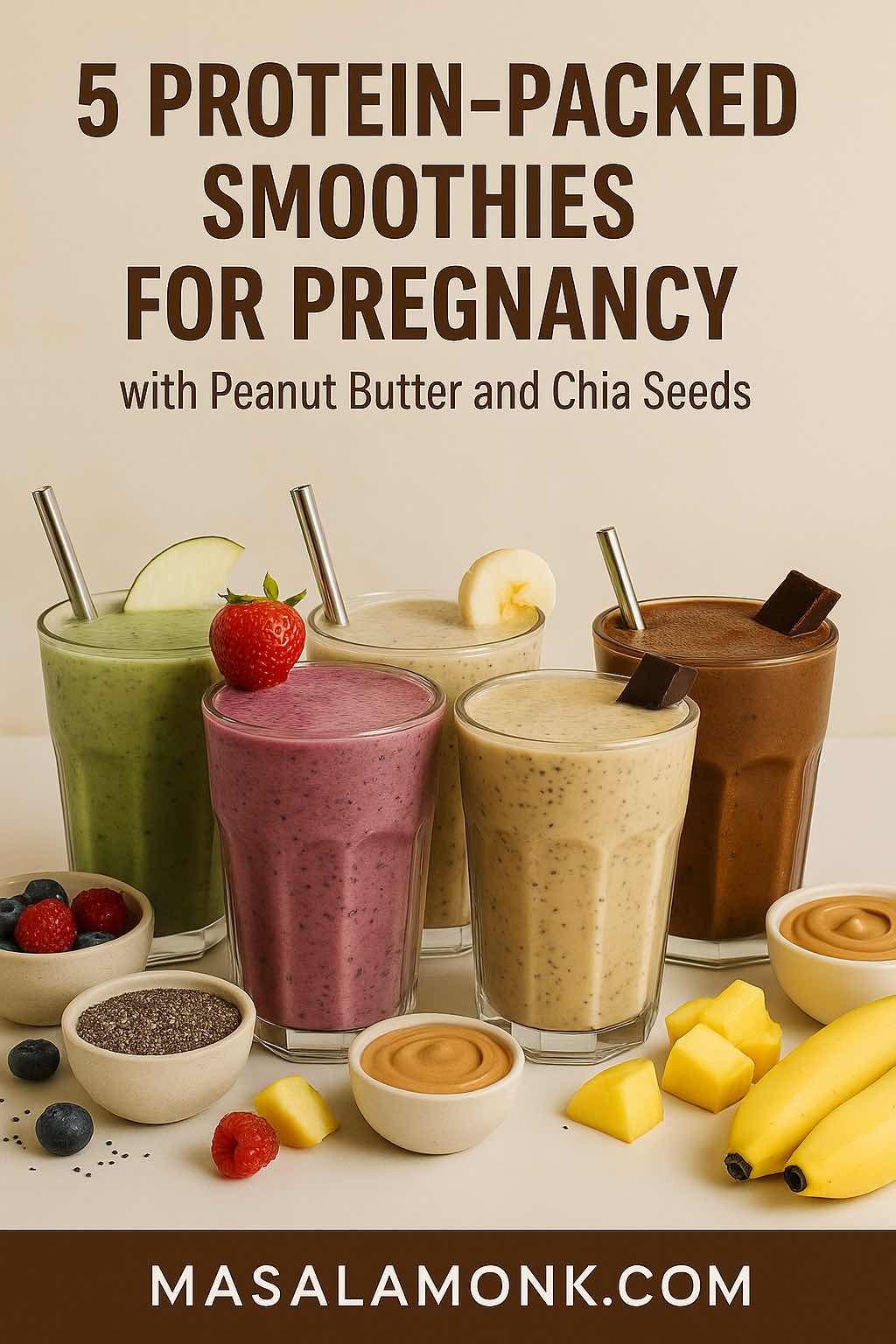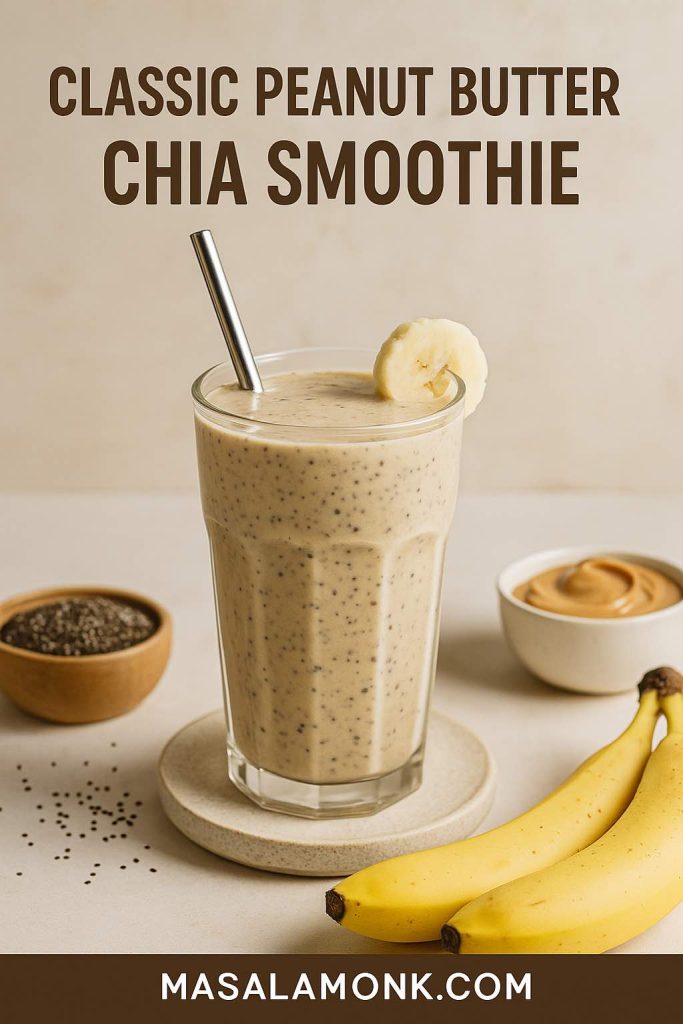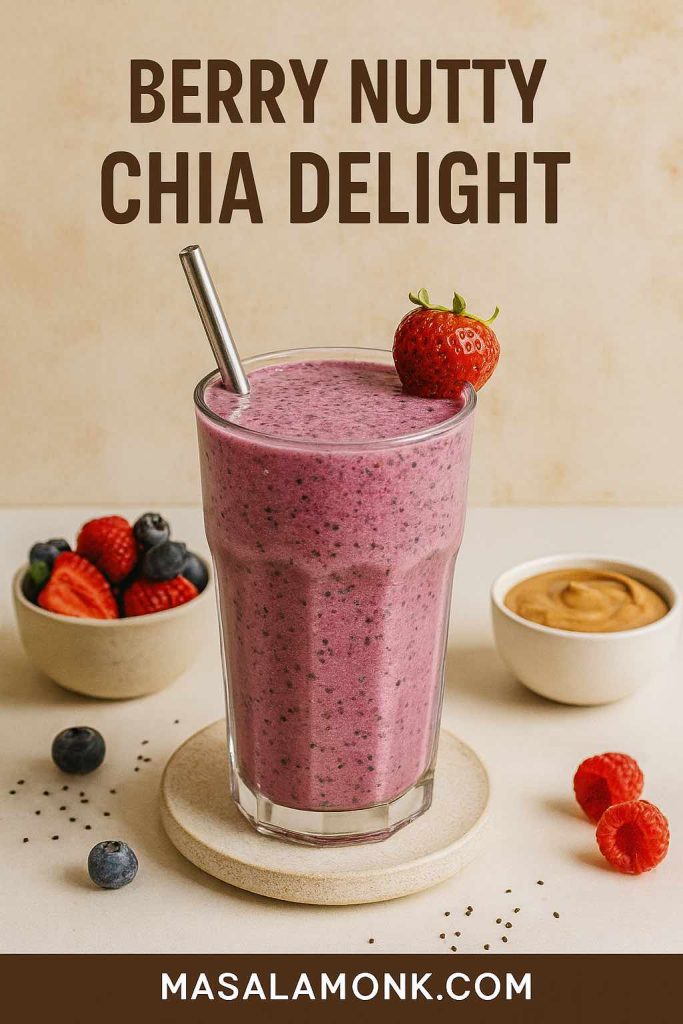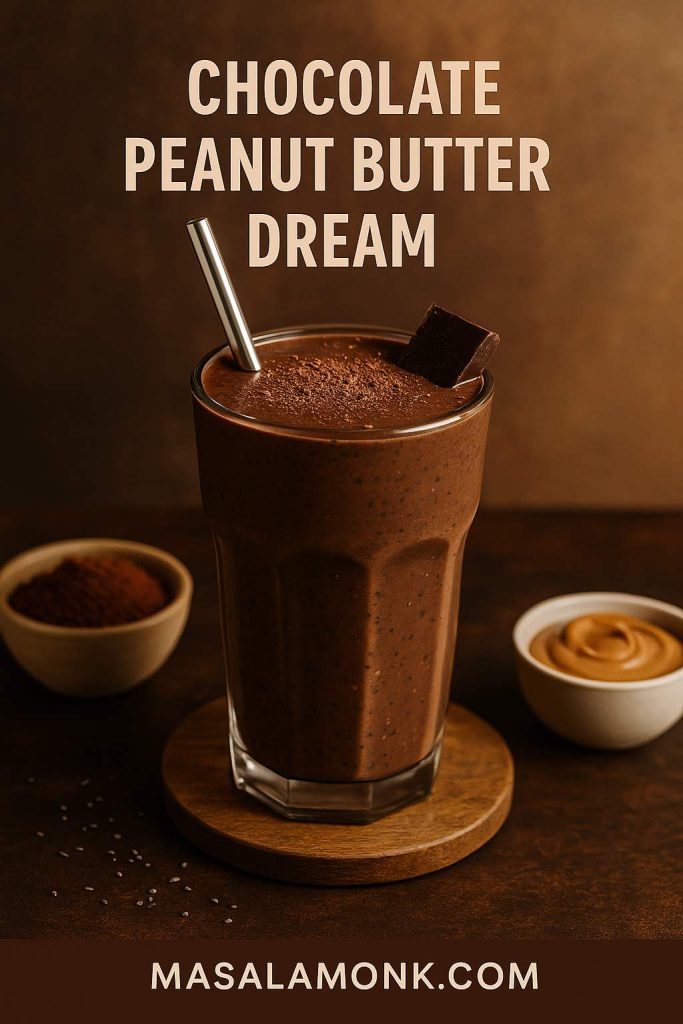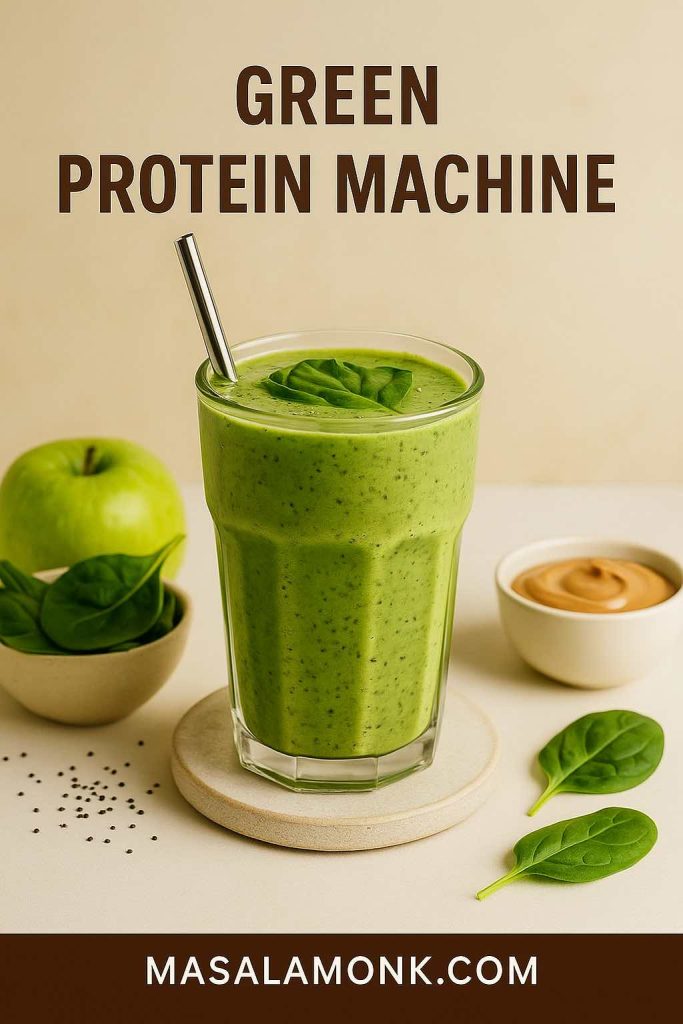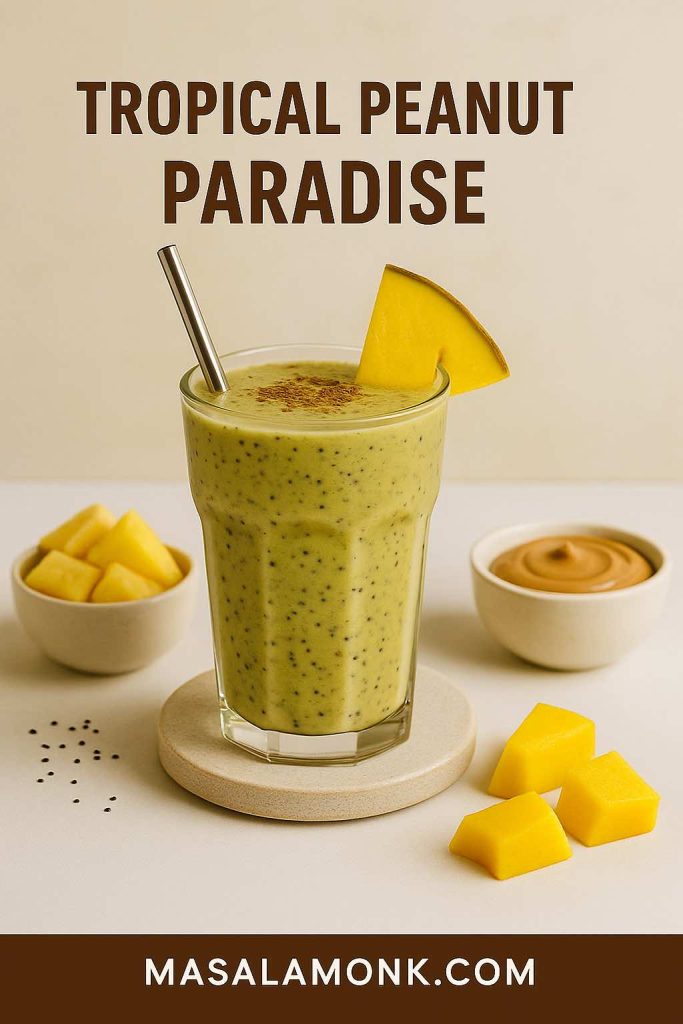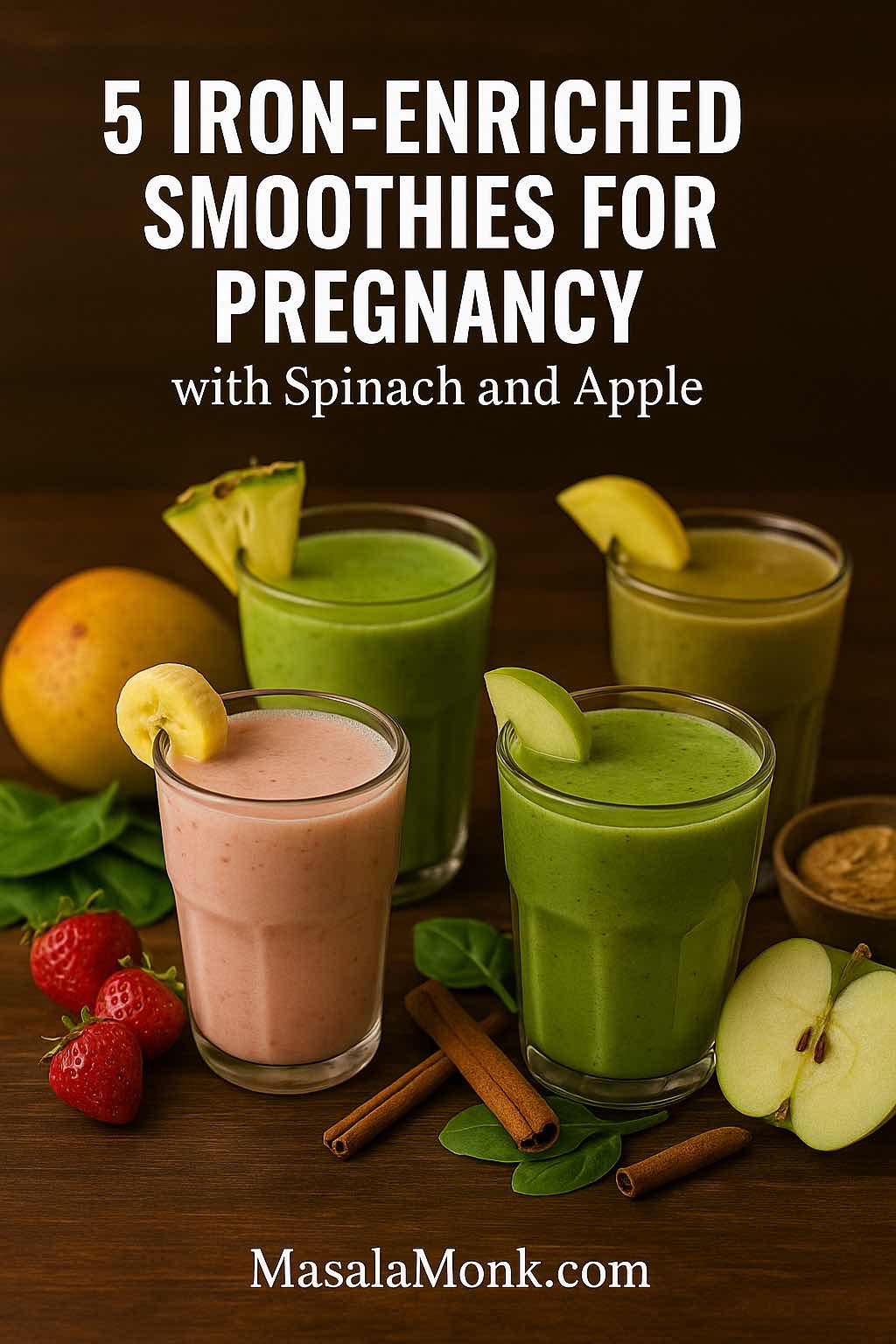
Delicious, nutrient-dense blends to nourish you and your baby
The Pregnancy Iron Story: Why It’s More Than Just a Mineral
Pregnancy is often described as a journey, but your body might think of it as a construction project — and building a brand-new human takes a lot of materials. One of the most important? Iron.
By the time you reach the second trimester, your blood volume has increased by up to 50%. This means your body is producing more hemoglobin (the protein in red blood cells that carries oxygen), and that process depends on iron. Without enough of it, your energy dips, your immune system weakens, and you may find yourself dealing with iron-deficiency anemia — a common challenge in pregnancy.
The good news? You don’t have to choke down dry spinach leaves or chew on plain beets to meet your needs. Smoothies are a fast, flavorful, and very pregnancy-friendly way to boost your daily intake.
Also Read: Anemia in Pregnancy: Impact and Solutions
The Science of Iron Absorption — and How to Hack It in a Smoothie
Iron comes in two forms:
- Heme iron — from animal sources, easily absorbed.
- Non-heme iron — from plant sources (like spinach), a little trickier for your body to use.
Since these recipes focus on plant-based sources, the key is to pair your iron with vitamin C. Vitamin C acts like a VIP pass for iron, helping your body absorb more of it. Think oranges, strawberries, kiwi, mango, pineapple — all smoothie-friendly ingredients.
Smart smoothie hacks for better iron uptake:
- Add citrus juice, berries, or tropical fruit to every green smoothie.
- Skip tea, coffee, and large doses of dairy for at least an hour before and after your smoothie (tannins and calcium block absorption).
- Don’t be afraid of flavor — sweet fruits, nut butters, cocoa powder, and spices can transform greens into crave-worthy blends.
Also Read: Folate-Fortified Drinks for Pregnancy: 5 Non-Alcoholic Mocktails
Why Spinach and Apple Make the Perfect Iron-Boosting Duo
- Spinach — rich in non-heme iron, folate (critical for early brain development), vitamin K, and antioxidants. Baby spinach is especially mild and blends into smoothies without a strong “green” taste.
- Apple — a natural source of vitamin C, fiber for digestion, and gentle sweetness. Apples also pair well with almost any fruit or spice, making them a versatile smoothie base.
Together, they create a nutritional foundation that’s easy to build on with pregnancy-friendly boosters like chia seeds, tofu, beets, or oats.
Also Read: Apples During Pregnancy: A Crunchy Bundle of Joy and Health
Beyond Nutrition: The Real-Life Benefits
From real moms’ stories and nutrition experts’ tips, we’ve learned that these smoothies aren’t just about hitting nutrient goals — they can feel like little moments of relief in your day.
- Morning sickness helper: Cold, fruity blends can be easier to handle when warm meals feel overwhelming.
- Energy lifter: Iron + complex carbs + healthy fats = more steady energy for long workdays or active toddlers.
- Digestive support: The fiber and hydration in smoothies help keep things moving — a big deal during pregnancy.
- Mood boost: There’s something satisfying about sipping a colorful, delicious drink you know is nourishing your baby.
What We Learned from Real Pregnant Women
In pregnancy forums, women rave about certain smoothie combos that made a difference for them:
“The chocolate peanut one got me through my first trimester.”
“Frozen mango and pineapple make spinach disappear — tastes like vacation.”
“Adding a squeeze of lemon made my green smoothies taste brighter and boosted my iron.”
These aren’t just tasty — they’re practical. Real experiences show that when a smoothie tastes good, you’ll actually want to drink it every day, which is the secret to making nutrition a habit.
Also Read: Kale During Pregnancy: Superfood for Supermoms
5 Iron-Enriched Smoothies for Pregnancy with Spinach & Apple
Flavor-packed recipes to nourish you and your baby every day
These smoothies aren’t just iron-rich — they’re designed for real life in pregnancy. That means easy prep, no weird aftertastes, and ingredients you can find in a regular grocery store. Each one pairs spinach’s plant-based iron with vitamin C boosters for maximum absorption, while balancing flavor, energy, and digestion needs.
1. Classic Spinach & Apple Glow
Bright, crisp, and easy to drink — even if you’re feeling queasy.
Ingredients
- 1 cup fresh baby spinach (washed)
- 1 green apple, cored and chopped (keep the peel for extra fiber)
- ½ banana (for creaminess and vitamin B6, which may help with morning sickness)
- ½ cup fresh orange juice (vitamin C for iron absorption)
- ½ cup water or unsweetened almond milk
- Ice, as needed
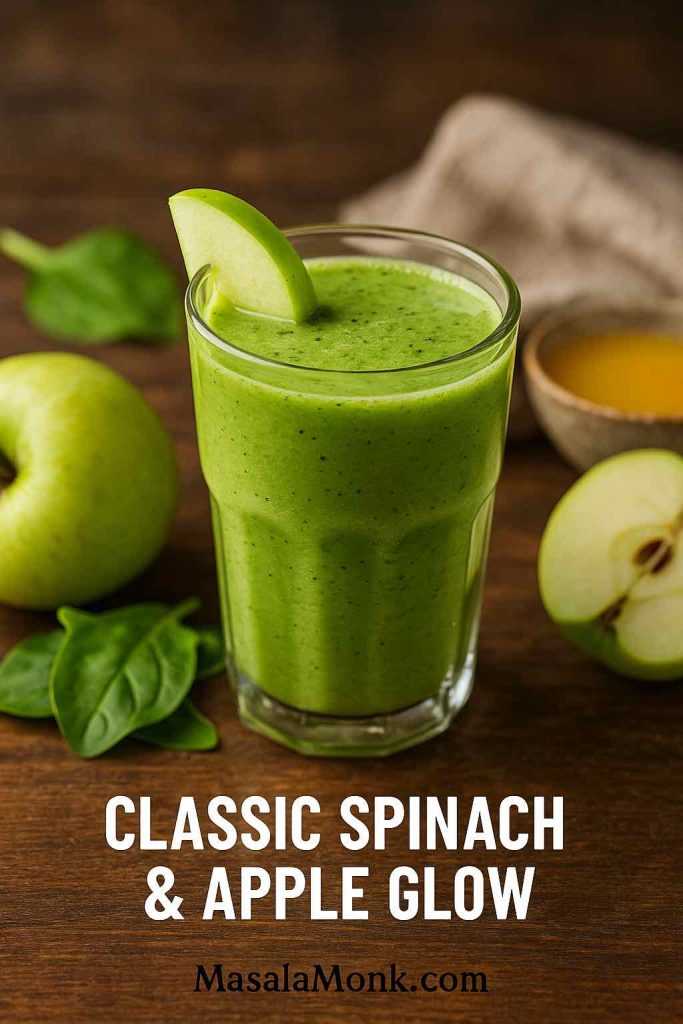
Method
- Add the spinach and liquid to your blender first — this helps break down the greens completely.
- Toss in the apple, banana, and orange juice.
- Blend until smooth, adding ice if you prefer it chilled and slightly thicker.
Pregnancy pro tips:
- If citrus is too strong for your stomach early in pregnancy, swap orange juice for pineapple juice — still high in vitamin C but a bit gentler.
- Make freezer packs of spinach + chopped apple + banana so you can just pour in juice and blend.
Why it works: This is the “starter” green smoothie — mild flavor, gentle on the stomach, and a good balance of iron, folate, and fiber. The vitamin C from the orange juice helps your body use the iron from spinach more effectively.
Also Read: Boosting Folate in Pregnancy: Top 5 Lentil and Bean Dishes
2. Pineapple-Mango Spinach Sunshine
A tropical energy boost that hides every trace of spinach.
Ingredients
- 1 cup baby spinach
- 1 cup frozen mango chunks (vitamin C powerhouse)
- ½ cup pineapple chunks (extra vitamin C + bromelain for digestion)
- Juice of ½ lime
- ½ cup coconut water (hydrating electrolytes)
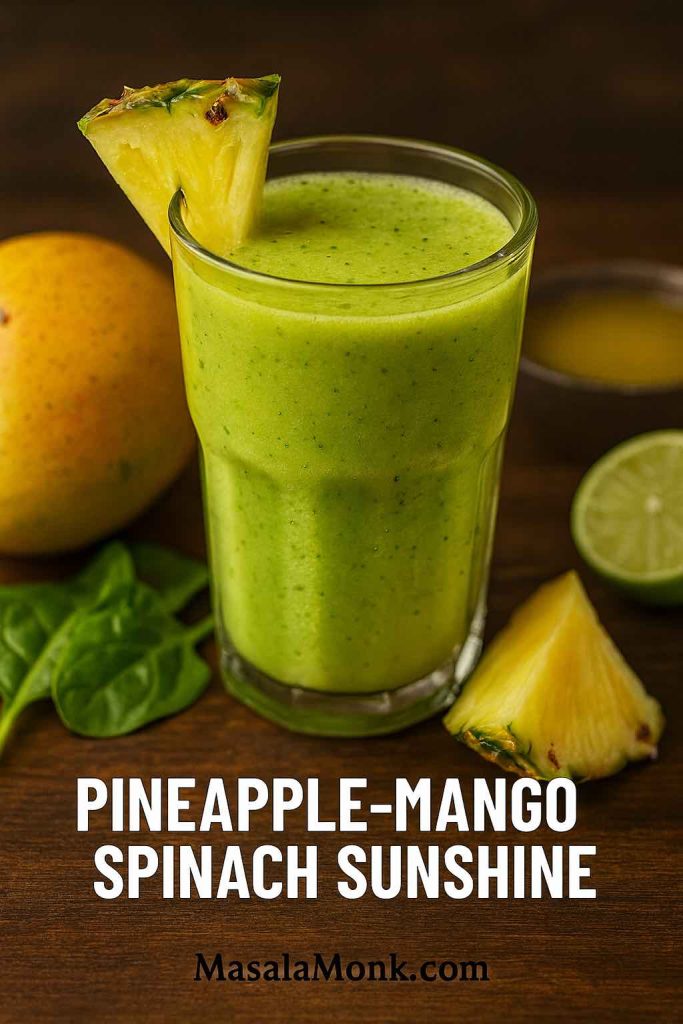
Method
- Blend spinach and coconut water first for a smoother texture.
- Add mango, pineapple, and lime juice.
- Blend until thick, creamy, and sunshine-yellow.
Pregnancy pro tips:
- Frozen fruit keeps the smoothie icy without watering it down.
- Add 1–2 tbsp chia seeds if you want extra omega-3s and fiber to help with pregnancy constipation.
Why it works: This is the “I can’t taste the greens” smoothie. It’s ideal for days when your taste buds are picky but you still want an iron-rich, vitamin-packed drink. The tropical sweetness also feels refreshing during hot afternoons or post-walk cooldowns.
Also Read: Vitamin D and Pregnancy
3. Peanut Butter-Chocolate Spinach Shake
Indulgent, comforting, and loved by real moms for first-trimester survival.
Ingredients
- 1 cup fresh spinach
- 1 frozen banana (creaminess + natural sweetness)
- 1 tbsp natural peanut butter (protein + healthy fats)
- 1 tsp unsweetened cocoa powder (iron-rich and antioxidant-packed)
- ¾ cup oat milk or almond milk
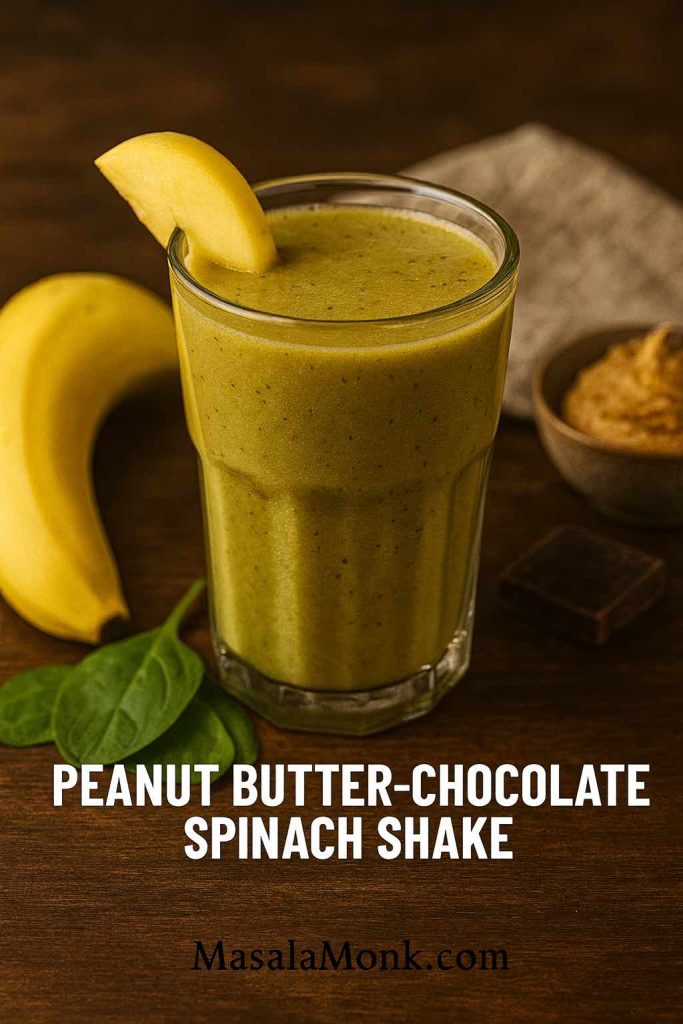
Method
- Add spinach and milk to blender, blitz until smooth.
- Add banana, peanut butter, and cocoa powder.
- Blend until thick and milkshake-like.
Pregnancy pro tips:
- If you need more calories in the second or third trimester, add 1–2 dates for sweetness and extra iron.
- A sprinkle of cinnamon on top can help balance blood sugar.
Why it works: The cocoa and peanut butter completely hide the spinach flavor. You get iron from the spinach and cocoa, plus sustained energy from protein and healthy fats — perfect as a mid-morning or post-nap pick-me-up.
Also Read: Garlic Supplements and Pregnancy: Warnings & Safety Considerations,
4. Strawberry-Banana Iron Boost (with Tofu)
Smooth, protein-rich, and gentle for sensitive tummies.
Ingredients
- 1 cup strawberries (fresh or frozen — both are high in vitamin C)
- 1 banana
- ½ cup silken tofu (plant-based protein + iron)
- Juice of ½ lemon
- ½ cup almond milk
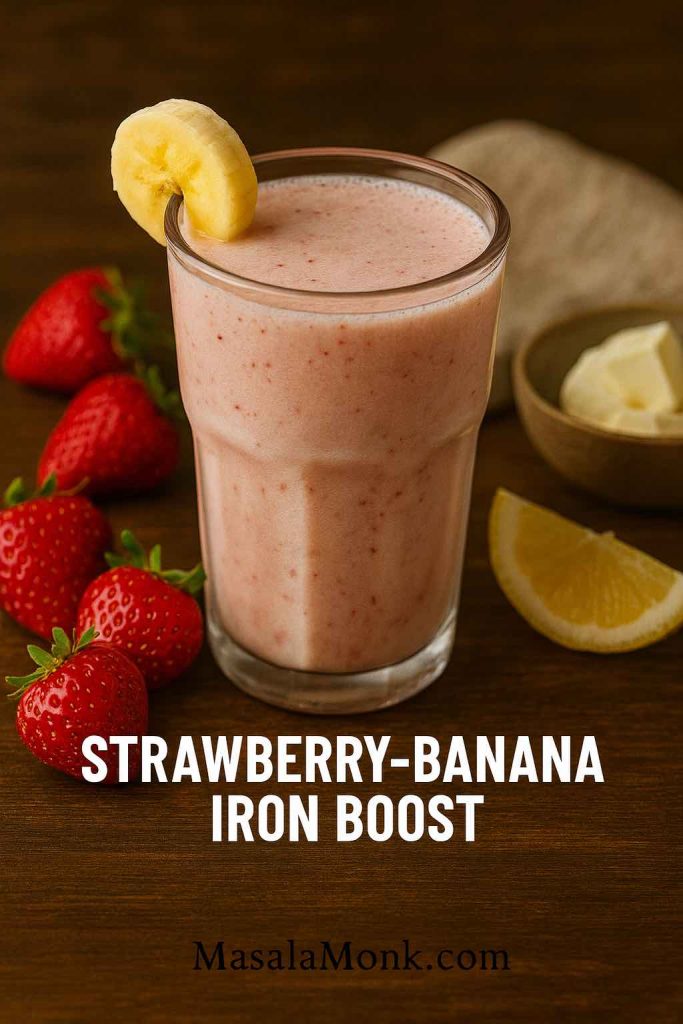
Method
- Blend all ingredients until silky smooth.
- Adjust sweetness with a drizzle of honey or a date if needed.
Pregnancy pro tips:
- Silken tofu blends invisibly, adding creaminess without altering taste.
- Keep frozen strawberries on hand for easy prep and a frostier texture.
Why it works: This is a perfect breakfast smoothie — it’s filling, rich in iron and protein, and the lemon juice keeps flavors fresh while improving iron absorption. Great for days when you want something mild but nutrient-dense.
Also Read: Dates during Pregnancy
5. Apple-Cinnamon Spinach Comfort Blend
Cozy, spiced, and perfect for cooler mornings or post-dinner cravings.
Ingredients
- 1 cup spinach
- 1 apple, chopped (leave the peel for more fiber)
- ½ tsp cinnamon (balances blood sugar and adds warmth)
- ½ cup unsweetened applesauce (natural sweetness + extra apple flavor)
- ½ cup water or oat milk
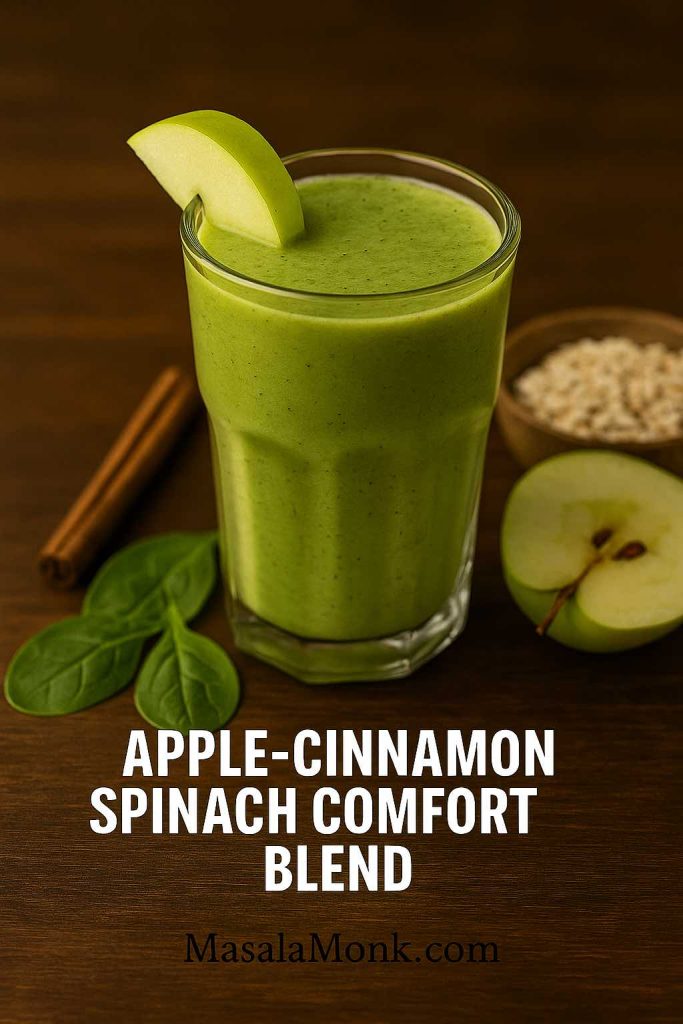
Method
- Blend spinach with your liquid until smooth.
- Add apple, applesauce, and cinnamon.
- Blend again until creamy; warm slightly on the stove if you want a “warm smoothie” for winter mornings.
Pregnancy pro tips:
- For extra iron, toss in 1–2 tsp blackstrap molasses — a natural, pregnancy-safe source of iron with a rich flavor.
- Add oats if you want a thicker, more filling version.
Why it works: Sometimes you just want something that tastes like comfort food. This smoothie delivers cozy flavors while sneaking in greens and iron.
Also Read: 6 Benefits of Eating Mango During Pregnancy
Nutritional Highlights per Smoothie
Note: These are estimates for educational purposes. Actual values may vary depending on exact ingredients, brand, and portion sizes.
1. Classic Spinach & Apple Glow
| Nutrient | Approx. Amount | Why It Matters in Pregnancy |
|---|---|---|
| Iron | ~3.1 mg | Supports hemoglobin production and oxygen delivery |
| Vitamin C | ~70 mg | Enhances non-heme iron absorption |
| Folate | ~75 mcg | Crucial for neural tube development |
| Fiber | ~5 g | Supports digestion and helps prevent constipation |
| Calories | ~130 kcal | Light yet energizing for mornings |
2. Pineapple-Mango Spinach Sunshine
| Nutrient | Approx. Amount | Why It Matters in Pregnancy |
|---|---|---|
| Iron | ~2.8 mg | Maintains healthy red blood cells |
| Vitamin C | ~85 mg | Boosts iron absorption significantly |
| Folate | ~70 mcg | Supports baby’s brain and spinal cord development |
| Fiber | ~4 g | Helps keep digestion regular |
| Calories | ~140 kcal | Refreshing, hydrating, and energizing |
3. Peanut Butter-Chocolate Spinach Shake
| Nutrient | Approx. Amount | Why It Matters in Pregnancy |
|---|---|---|
| Iron | ~3.6 mg | From spinach + cocoa powder |
| Protein | ~8 g | Supports baby’s growth and maternal muscle health |
| Healthy Fats | ~7 g | Nourishes brain development and keeps you fuller longer |
| Fiber | ~5 g | Aids digestion |
| Calories | ~210 kcal | Satisfying snack or mini-meal |
4. Strawberry-Banana Iron Boost (with Tofu)
| Nutrient | Approx. Amount | Why It Matters in Pregnancy |
|---|---|---|
| Iron | ~4.0 mg | Tofu + spinach offer plant-based iron |
| Protein | ~9 g | Plant protein supports tissue repair and growth |
| Vitamin C | ~65 mg | Helps absorb the iron in tofu and spinach |
| Folate | ~80 mcg | Supports early pregnancy development |
| Calories | ~180 kcal | Balanced breakfast or midday fuel |
5. Apple-Cinnamon Spinach Comfort Blend
| Nutrient | Approx. Amount | Why It Matters in Pregnancy |
|---|---|---|
| Iron | ~3.2 mg | Spinach + optional molasses enrich iron intake |
| Fiber | ~6 g | Helps with pregnancy-related constipation |
| Vitamin C | ~35 mg | From apple, boosts iron absorption |
| Antioxidants | High | Cinnamon + apple support immune health |
| Calories | ~150 kcal | Comforting yet nutrient-dense |
💡 Iron Boosting Tips for Pregnancy Smoothies
Make every sip count for you and your baby.
Pregnancy nutrition isn’t just about what you eat — it’s also about how your body uses it. These simple, pregnancy-safe hacks will help you get the most iron from your daily smoothie habit:
1. Pair Iron with Vitamin C Every Time
Plant-based (non-heme) iron from spinach, tofu, or cocoa gets absorbed more efficiently when you team it up with vitamin C-rich ingredients like oranges, pineapple, strawberries, kiwi, or lemon juice.
Think of vitamin C as your iron’s “best friend” — it makes sure more of it actually gets into your system.
2. Skip Iron Blockers Before & After
Tea, coffee, and large amounts of calcium (from milk, yogurt, or supplements) can interfere with iron absorption. Try to wait at least an hour before or after your smoothie to enjoy them.
3. Sneak in Plant-Based Protein
Smoothies with tofu, hemp seeds, chia seeds, or nut butters not only add protein and healthy fats, but also contribute a little extra iron. This combination helps with steady energy levels and supports your baby’s growth.
4. Frozen Fruit = Better Texture & Tolerance
Frozen mango, berries, or bananas give smoothies a creamier, thicker texture — and can make them more refreshing during pregnancy, especially if you’re battling morning sickness.
5. Add “Hidden Iron” Boosters
Blackstrap molasses, pumpkin seeds, and unsweetened cocoa powder are surprisingly iron-rich and blend in without overpowering flavor.
6. Make It a Habit, Not a Chore
Iron levels improve over time with consistency. A daily smoothie is an easy, tasty way to keep up with increased pregnancy iron needs — and to support your energy, mood, and digestion along the way.
Make It a Habit, Not a Hassle
Smoothies should make your life easier, not add to your to-do list. Here’s how to make these blends part of your daily rhythm:
- Batch prep: Freeze fruit and greens in single-serve bags. In the morning, just add liquid and blend.
- Mix and match: Swap spinach for kale, apple for pear, or almond milk for coconut water depending on your mood.
- Double up: Make extra and store in a mason jar for an afternoon snack — just shake before sipping.
If You Love This Post, You’ll Also Love…
- Protein power: 5 Protein-Packed Smoothies for Pregnancy with Peanut Butter and Chia Seeds — ideal for keeping you full longer.
- Natural sweetness: 5 Energizing Date and Almond Smoothie Recipes for Expectant Mothers — perfect for a mid-day treat.
- Morning comfort: 5 Morning Smoothies for Expectant Mothers with Oats and Banana — gentle and satisfying.
- Digestive ease: Digestive Health Smoothies with Papaya and Curd — for gut support and enzyme boost.
- Extra greens: 5 Mid-Morning Smoothies with Spinach & Almond Milk — more green options you’ll actually enjoy.
Closing Note
Pregnancy can make even the simplest health goals feel complicated. But an iron-enriched smoothie — cool, flavorful, and ready in minutes — can be one of the easiest ways to nourish yourself and your growing baby. With the right flavors and a few smart tweaks for absorption, you’ll have a daily ritual that’s as delicious as it is beneficial.
Frequently Asked Questions
1. Can I drink spinach smoothies every day during pregnancy?
Yes — baby spinach and similar greens are safe in moderate amounts during pregnancy, and they’re a great source of iron, folate, and vitamin K. Just wash greens thoroughly to remove any dirt or bacteria.
2. How much iron do I need while pregnant?
Most pregnant women need about 27 mg of iron per day (according to WHO and ACOG guidelines). Smoothies can help you meet part of this goal, but you may still need iron-rich meals and/or supplements if your doctor advises.
3. What is the best time of day to drink an iron-rich smoothie?
Mid-morning or mid-afternoon is ideal — it keeps your energy steady and avoids competing with high-calcium meals (like dairy-rich breakfasts) that can block iron absorption.
4. Can I use frozen spinach instead of fresh?
Absolutely. Frozen spinach is usually flash-frozen at peak freshness, which helps lock in nutrients. It’s convenient, lasts longer, and blends well in smoothies.
5. Which fruits boost iron absorption the most?
Fruits highest in vitamin C — such as oranges, strawberries, kiwi, mango, and pineapple — are the best partners for spinach in smoothies.
6. Are dairy-based smoothies less effective for iron absorption?
Calcium can interfere with plant-based iron absorption, so if you’re focusing on iron, consider non-dairy options like almond milk, oat milk, or coconut water. You can still enjoy dairy, but try to have it at a different time.
7. How can I make my smoothies more filling?
Add protein and healthy fats: nut butters, chia seeds, hemp seeds, oats, or silken tofu all make smoothies more satisfying and help stabilize blood sugar.
8. Can these smoothies help with pregnancy fatigue?
Yes. Low iron is a common cause of pregnancy fatigue. Combining iron-rich greens with vitamin C, plus some protein and complex carbs, can support better energy levels over time.
9. Is it safe to add supplements or protein powders to these smoothies?
Only if approved by your healthcare provider. Some protein powders contain herbs or additives not recommended during pregnancy. Look for clean, pregnancy-safe options.
10. What if I have pregnancy-related anemia?
If you’ve been diagnosed with anemia, these smoothies can be a helpful part of your nutrition plan, but they should complement — not replace — any supplements or treatments prescribed by your doctor.







